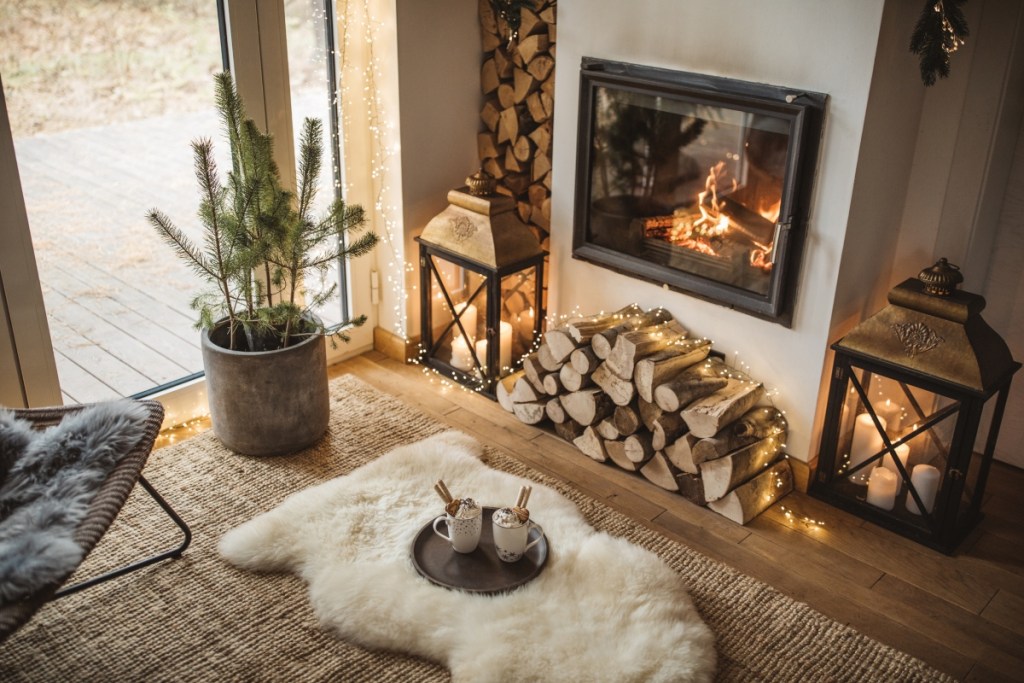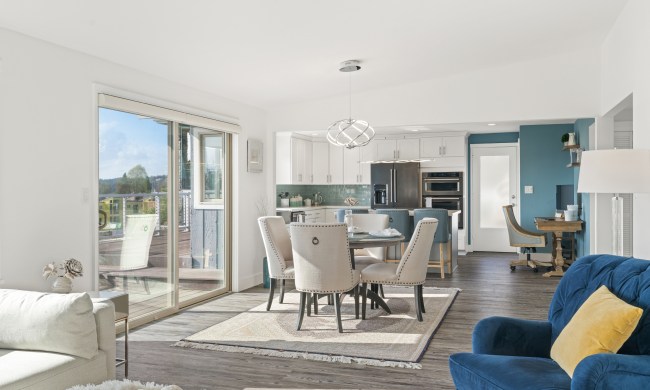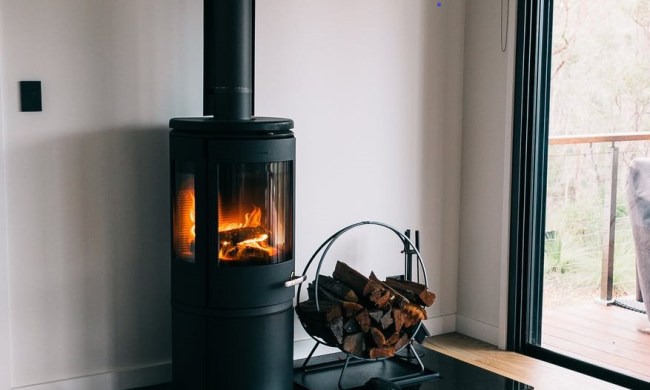Home design trends come and go. Styles that are all the rage eventually get overused and become outdated. We all know that sensation of style fatigue — you feel like you’ve seen the same thing over and over, and just want something new and fresh.
As we head into 2022, there are several trends that we’ll be saying goodbye to. In some cases, these trends have been slowly fading away for years because they’re impractical or difficult to maintain, while in other instances, the COVID-19 pandemic caused homeowners to embrace other options.
These are the interior design trends you should pack up and store away… at least until the cycle finds its way back around again.

Kitchen trends that won’t be trendy in 2022
Avoid these design trends if you want to keep your kitchen from looking stuck in the past.
Faux finishes
Homeowners are looking for materials that are natural and authentic. According to Ayca Stiffel, senior designer at By Design Interiors, “A trend that is dying out [is] anything faux finished. People are wanting more organic and natural designs that are light, airy, and can stand the test of time. Pure materials that are derived of natural materials are timeless, as opposed to a wood-look porcelain tile that may not last as long but [is] cheaper.”
Sylvia James, interior designer for Home How, agreed that people are looking for natural materials. “With more time spent at home, there is a resurgence of interest in bringing the outside in, using natural materials like wood,” she said. “It goes particularly well with other on-trend materials like metal and stone to create a light, bright, and airy atmosphere that provides a blank canvas for you to add color and character.”
Minimalism
Sleek, simple, and neutral doesn’t hold that much appeal anymore.
“As people have been spending more time in their homes due to the pandemic, the wish to express unique taste and personality has grown stronger,” said Teri Simone, the chief kitchen designer for Nieu Cabinet Doors. “The maximalist trend is the perfect way to be creative and playful with decor — and this is no different in the kitchen.
“Moving away from the minimalist white kitchens that have been popular in recent years, people are yearning for color,” she added. “Boldly colored cabinetry, wall colors, and statement tile backsplashes are making a comeback. This trend combines kitsch vintage styles, bold modern colors, and opulent metallics, building a sense of drama.”
All-white kitchens
No, the all-white kitchen isn’t completely going away — it will always be a timeless staple for a reason. But white is giving way to a lot more color.
“White isn’t out, but we are implementing painted or natural wood islands as opposed to an all-white kitchen,” explained Betty Brandolino, founder and creative director of Fresh Twist Studio. “Some of our customers are even asking for entire kitchens with painted cabinets. Green has been the color of choice, ranging from a sage green, to an olive green, and even a brighter green. I would also say if a client still wants a classic white kitchen, the shade of white they tend to choose is becoming warmer and not as bright as in years past.”
Simone noted that when moody blues and greens are “applied to cabinetry, wall treatments, counter materials, or tiles,” they “contrast with clean whites, and bold metallics for a dramatic, luxury statement. Moody colors are a sophisticated way to achieve more personality within the kitchen.”
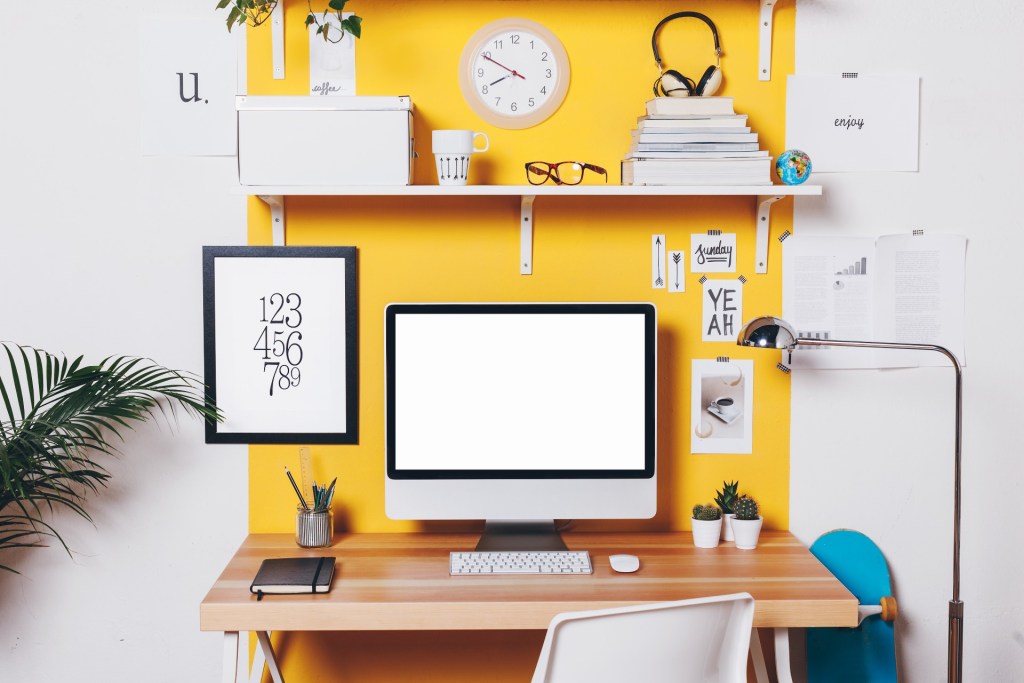
Open concepts aren’t as popular — but neither are single-use rooms
For a while now, homeowners have been focusing on making their houses feel more open. New homes with open floorplans have drawn the attention of buyers, and people who owned houses often renovated them to create larger areas that served multiple purposes.
While having open spaces makes it easy to keep an eye on kids and can be great for entertaining, the COVID-19 pandemic has made people recognize the drawbacks of that design. Not having clearly delineated rooms made it difficult to work from home and to get some desperately needed privacy when everybody was together 24/7.
The pandemic has caused people’s preferences to shift when it comes to floorplans. According to Evelyn Benatar, president of New York Interior Design Inc., fewer people are choosing “big, open spaces when you are building a house. The loft-like feeling is going away because of COVID. People want more privacy and sectioned-off rooms.”
Homeowners are looking for separate spaces that they can use for a particular purpose, such as a home office or a gym, but they aren’t abandoning the open concept altogether. Multipurpose rooms can still be useful.
Homeowners don’t want rooms completely closed off either
While there is a need for privacy when it comes to certain tasks, multipurpose and multifunctional spaces are highly valued as well (if it makes sense).
“I see single-task rooms or separated rooms becoming less popular,” said Erika Barczak, senior designer at By Design Interiors. “I am really into multi-use rooms…partly because I live in a tiny home, and partly because I believe in the functionality of a space.
“We don’t need a separate room for every task: wrapping presents, to another little office nook, or a teeny laundry room,” Barczak continued. “These walls and doors are wasted square footage, and many of these novelty rooms just become storage. Why not make a utilitarian utility room that is large enough for kids to play, laundry to be running, and even serve as a working pantry or ‘dirty kitchen’ all in one?!”
Minimalism and industrialism give way to warmth
Minimalism, with its emphasis on white walls and ultrasimple designs, has been trendy for a while. According to Marilyn Sygrove, president of Sygrove Associates Design Group Inc., that style is dying out. “Since the pandemic, we have all hunkered down and want to feel safe and comforted, so surrounding ourselves with memories of carefree times has started to become very important,” she said.
Homeowners are now incorporating more features that give their homes some personality and make the spaces feel more comfortable. Industrial architectural design has also been trending for years, but things are going in the other direction as we approach 2022. Homeowners are shying away from metal and exposed brick, or at least being more selective in their use of metal and other industrial features.
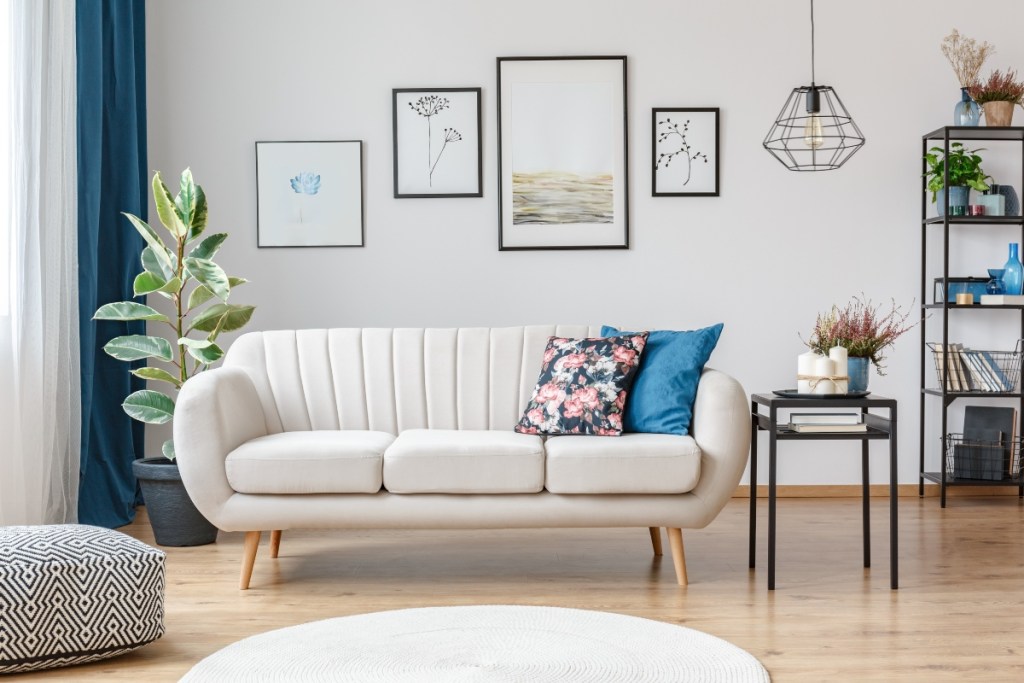
All-white is losing its appeal
Much like in the kitchen, using white throughout an entire room is another interior design trend that’s waning. White can make a room look crisp and clean, but too much of it can make a room feel cold. Homeowners are keeping white walls but including more colors for contrast.
They’re also shying away from white when it comes to furniture. A sofa, loveseat, or armchair in white or another light color may look attractive, but it’s not practical for a family with kids and pets. Homeowners are moving toward colors that don’t show dirt and pet hair as much.
In 2022, “….I don’t think you will see people living with a lot of white in their lives,” Sygrove said, “because it is not practical on all surfaces such as carpets, upholstery, and walls, so there will be subtle, tonal colors and layers of patterns and/or textures.”
Incorporating pastels can add an unexpected pop of color to a room, but this design trend sometimes got taken too far. Pastels are still popular, but homeowners are keeping things simple and including a single pastel-colored piece of furniture or accent or embracing softer tones.
“From vibrant colors, there will be a craving for something softer and gentler to come home to,” in 2022, according to Sygrove.
Textured paint is going by the wayside
Textured paint became trendy for a while, but homeowners are shying away from it now. “I have noticed that we are not doing as much painted texture walls as many people tended to do a few years back,” said Charlie A. Bolivar, interior designer at Charlie’s Designs LLC. “That has certainly become a thing of the past. I think that trend is dying out because many people nowadays prefer using wallpapers, and even large murals that can be done much faster and cheaper than having an artist create a textured wall.”

Rustic design will be an accent, not a centerpiece
Using reclaimed wood in home decor became trendy several years back, but, as with countless other trends, some people went overboard. Homeowners who incorporate reclaimed wood in their interior design will be using it as an accent, not as a central design element, in 2022. Distressed wood is another rustic trend that’s losing popularity.
“The ‘overtly’ country farmhouse is on its way out. I feel the ‘over the top’, country chic, rustic farmhouse style is fading away,” said Jenni Warsitz, lead designer at By Design Interiors. “Clients are leaning more toward modern, sleek lines, geometric tiles, fresh, light, and vibrant colors. Modern farmhouse is still relevant, but I think more Studio McGee — less Magnolia Home.”
Focus on timeless trends
Homeowners often buy furniture and accessories for a house without giving much thought to whether each piece will stand the test of time. Decorating a house isn’t a process that should be rushed. Furniture and decor can be expensive, so homeowners should choose carefully.
“Trends come and go — they have a timestamp; thus, I look for pieces that are timeless, functional, and look great no matter what decade,” Stiffel said. “If clients want to incorporate trends, [they should] keep to easy-to-change pieces, such as paint, pillows, bedding, etc. I always start with neutrals as [a] foundation and supplement with trends in these smaller, interchangeable pieces.”
